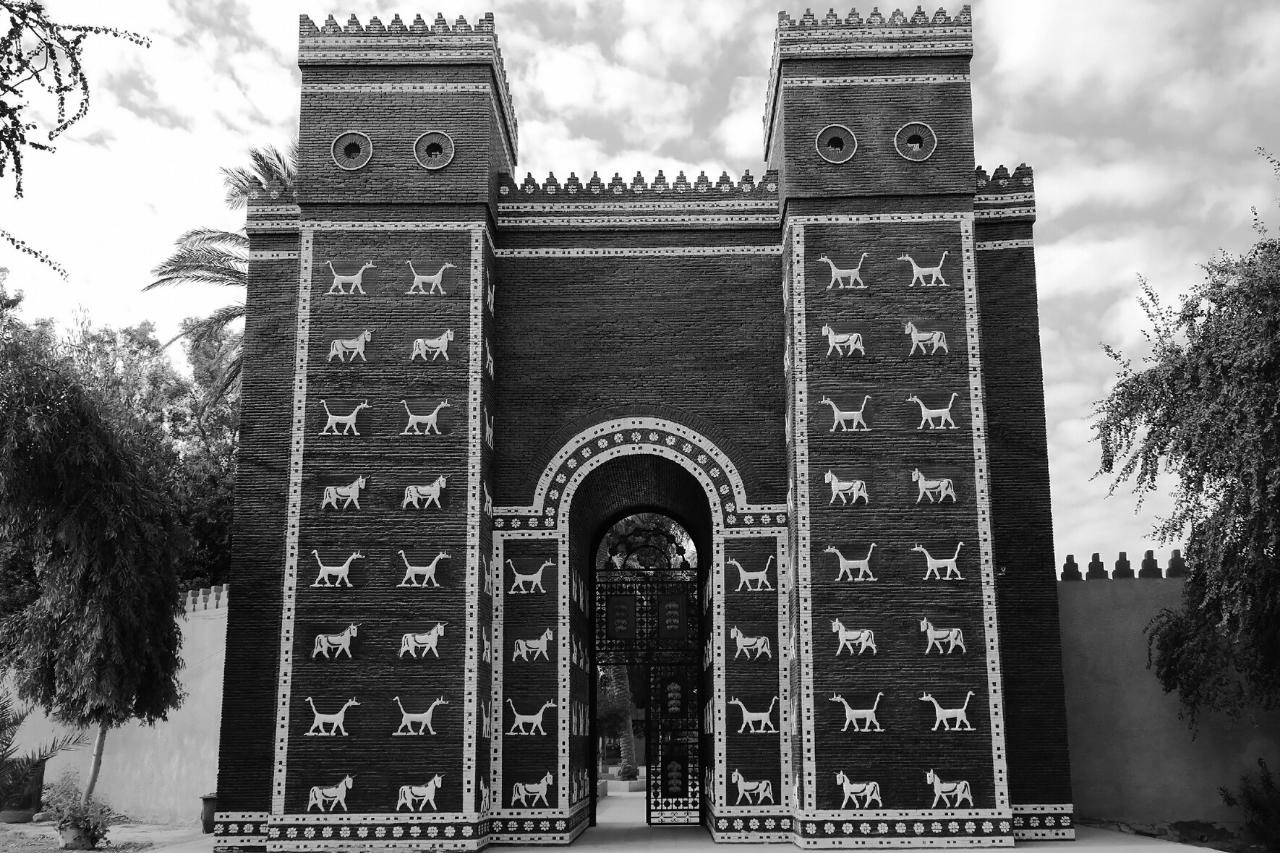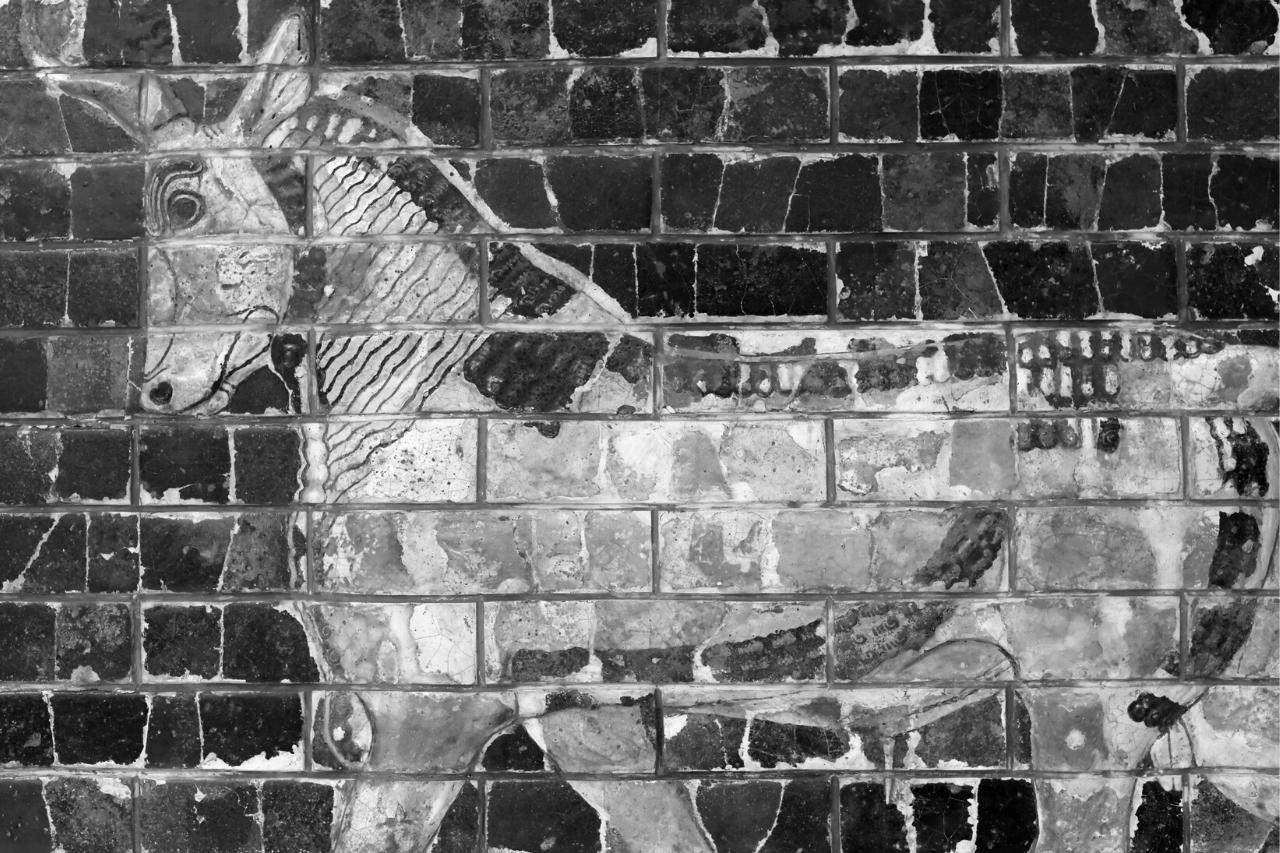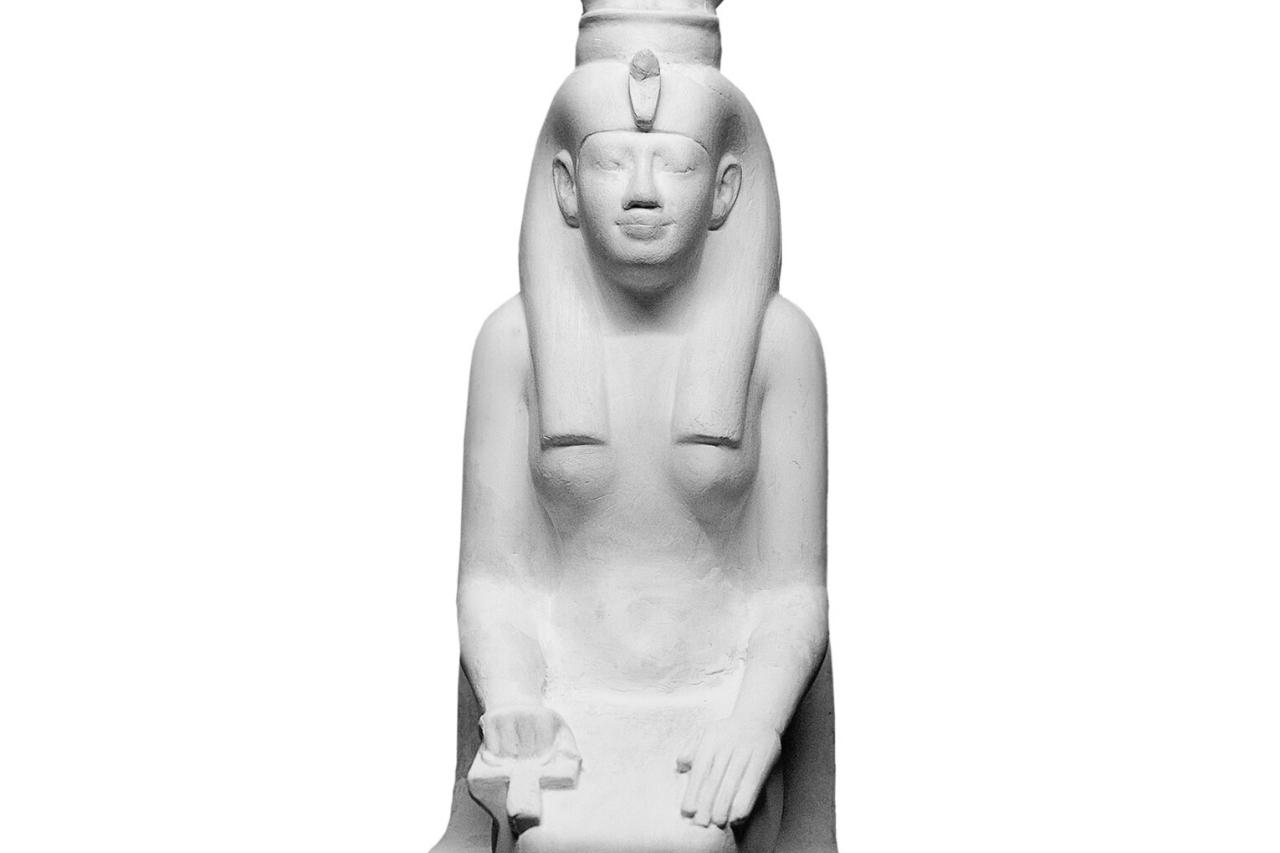Inanna: The Swoon-worthy Ancient Goddess of Sumerian Pantheon
Inanna was an ancient goddess of the Sumerian civilization. The Akkadians, Babylonians, and Assyrians adored her as she represents love, war, fertility, and divination, as well as wisdom.
She was the equivalent of the combined characteristics of Aphrodite (goddess of love) and Athena (goddess of combat) from Greek mythology.
Keep reading about Inanna as she was a powerful and complicated goddess, making her a clear testament to the rich Sumerian mythology.
Who Is Inanna?
Inanna is an ancient Mesopotamian goddess who appears more frequently than other deities in the Sumerian pantheon. Sumer was an ancient civilization in what is now Iraq. Inanna has a complex personality, as some myths depict her as passionate and feminine, whereas others characterize her as aggressive and sexual, and even antagonistic at times.
She had been worshipped as a Sumerian goddess, “Inanna,” as early as 4000 BCE to 3100 BCE, however, she became more popular after Sargon the Great’s rule, known as the “Queen of Heaven” or “Lady of Heaven.” As Inanna’s cult grew, temples were dedicated to her throughout Mesopotamia, including those in Nippur, Shuruppak, Lagash, Ur, and Zabalam, but her main cult center was the Eanna temple in Uruk.
Inanna is associated with love, war, fertility, and power and is known to overshadow other deities. She had numerous lovers, but the most well-known suitors were Enkimdu, a farmer, and Dumuzi, a shepherd.
Inanna initially favored Enkimdu, but her brother, Utu, persuaded her to pick the latter. She then married Dumuzi, with whom she had a tumultuous relationship. She even made him take her place in the underworld after witnessing how undisturbed he was by her disappearance.
Inanna as Ishtar
Ishtar was a Babylonian goddess who was revered by the Akkadians and Assyrians. She was the equivalent of the West Semitic goddess named Astarte. The Assyrians adored Ishtar so much that they elevated her above their highest god, Ashur. Her name, Ishtar, was derived from the Akkadians’ language and was first used by the goddess around 2300 BCE.
She evolved into a more complex character, surrounded in myth by death and disaster, a goddess of contradictory connotations and forces, such as love and war (same with Inanna). She was also the patroness and protector of prostitutes; temple prostitution was even a part of her cult worship.
Ishtar shared many characteristics with Inanna and manifested herself in different ways. Ishtar is known as the goddess of love, sexuality, and fertility, but she is never seen as a mother figure. As the goddess of war, she is typically represented as winged and armed.
Originally, Inanna and Ishtar were not linked as it was not clear if Inanna also had a Semitic origin. They were only identified as one and thought to be the same goddess with two different titles during the reign of the Akkadian King Sargon.
Inanna as Venus
Inanna was closely associated with the planet Venus and, coincidentally, with her Roman counterpart. This can also be attributed to Ishtar being an astral goddess. There are several written records of the personification of the planet through her.
Some interpretations of the myth regarding Inanna’s descent to the underworld pertained to the full cycle of the movement of Venus, Mercury, and the Sun. Inanna was regarded as Venus and Ninshubur as Mercury, and Inanna’s resurrection was aligned with the appearance and disappearance of the Sun in the sky.
Inanna’s connection with Venus (morning or evening star) happened before the first constellation was established in ancient Mesopotamia. If this is right, the date of identification can be used as a starting point for determining the earliest likely limit for the era when the process of constellation recognition in Mesopotamia began.
Origin of Inanna
The origin of the names of many Mesopotamian gods is frequently disputed among many scholars. In the case of Inanna, more than her name is disputed, largely because the element she represents is riddled with contradictions compared with those of the other gods.
Inanna was one of the seven most powerful Sumerian gods. An (sky god), Enlil (god of wind and storm), Enki (creator of man), Utu (god of sun and justice), Ninhursag (mother goddess), and Nanna (god of moon and wisdom) were the other six.
Meanwhile, her Sumerian ancestry appears to be a little unclear. It was never mentioned who her mother was, while her father differs in various mythologies. Some say that Inanna was the daughter of the sky deity An, while others say that she was the daughter of Nanna, Enlil, or Enki. In all of these myths, however, Inanna and Ereshkigal were sisters, while Utu was her brother, specifically her twin brother in some references.
Inanna's Symbol
Inanna had many symbols as she was a goddess who represented many things, including the opposites of love and war.
She had her symbols in things (rosette, eight-pointed star, apples, wool, scepter, crown, and knot), animals (dove, lion, butterfly, bat, and snake), plants (narcissus, lilies, myrtle, reeds, all sprout, sumac, and spring growth).
Also, she had her symbols in perfume scents (lotus, lily of the valley, lilac, myrrh, and lime), gems and metals (ruby, gold, obsidian, emerald, and andalusite), and even colors (black, green, silver, red, and white).
These symbols are associated with her portrayal as feminine, wise, bold, and courageous, to name a few, as well as her connection with resurrection.
Inanna has long been associated with fertility and wealth, among other things. In this context, Inanna’s most common goddess emblem was a bundle of spiraling reeds, which is also associated with agriculture. Inanna is said to have tied reeds together to create a vessel that she used to save humanity from the great flood.
What Are the Most Commonly Used Symbols of Inanna?
Out of all the symbols associated with Inanna, below are the most commonly used symbols and their corresponding representations:
Eight-pointed star – associated with the planet Venus, Inanna’s celestial body symbol. Eight years is the full cycle length of Venus around the Sun.
Lion – represents strength and power, whose roar is like a rumble of thunder, which is only appropriate to be symbolic of the Queen of Heaven.
Reed – represents life, structure, and provision. Ancient Inanna can be seen carrying a reed plant, which was a prized crop among her people.
Spiral – represents life’s growth and revolution with all of its twists. It is a reminder that life is not a straight path, and at the time of Inanna’s reign, her people clung to her.
Wings – it was believed that Inanna could fly and visit parts of her domain at will. Wings also represent freedom and the inspiration of hope and peace.
Crown – Inanna is frequently shown with a crown on her head, which designates her place in the pantheon of gods and goddesses. It also symbolizes triumph and a higher purpose.
Statues of Inanna always show a naked young woman, which symbolizes fertility and femininity. She was worshiped as the Sumerian fertility goddess. Even ancient Sumerian weddings included rituals dedicated to her.
Popular Myths and Poems About Inanna
Being the widely popular goddess that she was, many ancient Mesopotamian myths and poems featured Inanna. In many of these, she appeared to take over the realms of other gods.
Below are some of these known myths:
Inanna and the Huluppu Tree
This legend tells the story of a young Inanna who was still learning how to wield her power. It all began with a huluppu tree along the Euphrates River. Inanna tended to the tree and wondered how long it would take for her to have a throne and a luscious bed.
As the tree matured, an Anzu bird, a serpent “who cannot be charmed,” and Lilith, a malevolent spirit, had made the tree their home. Because of this, Inanna became frustrated and wept with anguish.
Inanna begged her brother, Utu, for assistance in driving the animals from the tree, but he refused. Inanna continued weeping and summoned Gilgamesh, who came and slew the serpent. Upon seeing this, the bird and Lilith took flight. The tree was chopped down, and Gilgamesh’s companions carved a bed and a throne out of the trunk. In return, Inanna rewarded Gilgamesh with pukku and mikku (a drum and drumsticks) for his bravery.
Inanna and the God of Wisdom
This story starts when Inanna recognized her maturity demonstrated by her delight in her “wondrous vulva” and by placing the crown on her head. As she realized her magnificence, she set out to visit Enki to claim the “me”—powerful decrees of positive and negative aspects that make civilization possible.
Enki’s sukkal, Esimud, warmly welcomed her, and Inanna and Enki ate and drank until Enki became intoxicated. Enki began to make toasts, promising Inanna the throne of kingship, priesthood, godship, truth, descent into the underworld, an ascent from the underworld, sexuality, and many other things. They toasted 14 times, and he gave Inanna seven “mes” in each toast, with Inanna acknowledging the receipt of all of them.
After receiving the mes, Inanna wisely boarded the Boat of Heaven right away, bringing with her all of the treasures that the drunken Enki had given her. When Enki woke up and realized what had happened, he summoned his servant to return with Inanna and the powers.
They attempted several times but were unsuccessful until the Boat of Heaven arrived in Uruk. Inanna then presented all of the mes she had brought with her to the people. Enki announced that the taken mes shall remain in the shrine of Uruk.
The Courtship Between Inanna and Dumuzi
This poem, or song, as others refer to it, is considered one of the oldest poems from the ancient world that tackles love. It is estimated to have been written around 2800 BCE. This describes the courtship of Inanna by her consort, Dumuzi (also known as Tammuz). Additionally, the poem also depicts a society dependent on improving agriculture to generate plants and animals.
It is related to the poem “Inanna Prefers the Farmer,” in which Utu told his sister, Inanna, that she was ready to marry. With her two suitors, a farmer named Enkimdu and a shepherd named Dumuzi, Inanna initially preferred Enkimdu. However, Utu and Dumuzi persuaded her by emphasizing the superiority of what he could offer compared to Enkimdu.
Inanna eventually chose Dumuzi, and the consummation of their marriage was described in a series of erotic love poems. However, it was not a love story with a happy ending, as depicted in our next myth – The Descent of Inanna.
The Descent of Inanna
This poem tells the story of when Inanna descended to the underworld to comfort the Queen of the Underworld, her sister, Ereshkigal when she lost her husband. Although Inanna was aware that the underworld was a realm from which no one could return, she felt terrible about her sister’s crying and lamenting and decided that she needed to go.
Prepared for her journey to the underworld by bringing seven mes to protect her and instructed her sukkal, or personal attendant, Ninshubur, if, after three days and three nights she did not return, Ninshubur must lament in the ruin mounds, beat the drums at the sanctuary, and go to Enlil, Nanna, or Enki to seek their help to bring her back.
Arriving at the Underworld
When Inanna arrived in the underworld, Ereshkigal was hesitant to see her. At every gate, Ereshkigal instructed Neti, the gatekeeper, to require Inanna to deposit one me every time, stripping her of power and garments. She was naked when she finally met Ereshkigal. Inanna sat on the throne after making her sister rise from it. She was then judged negatively by the Anuna (seven judges of the underworld) and was then killed by her sister. Her corpse was hung on a hook.
After three days and Inanna having not yet returned, Ninshubur followed her instructions and went to Enlil, Nanna, and Enki. Only Enki was concerned and immediately picked dirt to turn it into emissaries who carried the food and water of life for Inanna. These creatures succeeded in bringing Inanna back to life.
However, the judges said she couldn’t go without a replacement. Together with the demons, they ascended from the underworld and looked for someone to take her place. He saw Dumuzi, dressed in a gorgeous robe and sitting on a throne, unbothered by Inanna’s disappearance. Seeing this, Inanna elected Dumuzi to be her replacement.
Epic of Gilgamesh
This myth is basically about Gilgamesh, considered Uruk’s hero-king, and how he fought death in his quest for purpose in life, becoming the first epic hero in global literature in the process. Gilgamesh’s sadness and the concerns raised by his friend’s death connected with anybody who has grappled with the meaning of existence in the face of death.
With regard to Inanna and in connection with the poem “Gilgamesh and the Bull of Heaven,” the myth recounts the time when Inanna forced her father to release the bull of heaven. This happened after Gilgamesh turned down Inanna’s proposal to be her lover. She went to heaven and persuaded An to give her the Bull of Heaven, threatening to raise the dead and order them to consume the living if her father would not oblige.
With the help of Enkidu, Gilgamesh was able to kill the bull, which further infuriated Inanna. Meanwhile, Enkidu had a dream in which the gods said that as a punishment for killing the bull, either Gilgamesh or Enkidu would have to die. Soon after, Enkidu got sick and eventually died.
These are only a few of the many myths and poems about Inanna that give us a glimpse of her adventures and life stories, revealing the various aspects of this complicated goddess. However, the way she is perceived as complicated is what makes her stand out among other goddesses and deities who share a similar vein.
Conclusion
The Sumerian goddess Inanna is a multifaceted and royal deity. She is referred to as the Queen of Heaven or the Lady of Heaven.
Below are some of the keynotes about this powerful goddess and her adventures in her most popular myths:
Love, conflict, fertility, and success are associated with Inanna, a Sumerian goddess. She is also known as Ishtar, a Babylonian goddess revered by the Akkadians and the Assyrians.
During the time of Sargon the Great, the Akkadian King, Inanna rose to prominence. Her cult expanded, and temples were built for her all over Mesopotamia. Nevertheless, the Eanna temple in Uruk remained her principal cult center.
Along with An, Enlil, Enki, Utu, Ninhursag, and Nanna, Inanna was one of the seven most powerful Sumerian gods.
Inanna is represented by a variety of symbols, the most popular of which are the eight-pointed star, spiraling reed, lion, wings, and crown.
There are many myths and poems about her, but the most popular is The Descent of Inanna, which chronicled her journey to the underworld, as well as how she was able to survive it.
Though not as well-known as Greek and Roman mythology, Inanna gave a sneak peek into how Sumerian mythology offers a vast pantheon of characters worth exploring and her identity is definitely worth knowing for.













